Sir David Wilkie (1785 – 1841)
Get a Sir David Wilkie (1785 – 1841) Certificate of Authenticity for your painting (COA) for your Sir David Wilkie (1785 – 1841) drawing.
For all your Sir David Wilkie (1785 – 1841) artworks you need a Certificate of Authenticity (COA) in order to sell, to insure or to donate for a tax deduction.
Getting a Sir David Wilkie (1785 – 1841) Certificate of Authenticity (COA) is easy. Just send us photos and dimensions and tell us what you know about the origin or history of your Sir David Wilkie (1785 – 1841) painting or drawing.
If you want to sell your Sir David Wilkie (1785 – 1841) painting or drawing use our selling services. We offer Sir David Wilkie (1785 – 1841) selling help, selling advice, private treaty sales and full brokerage.
We have been authenticating Sir David Wilkie (1785 – 1841) and issuing certificates of authenticity since 2002. We are recognized Sir David Wilkie (1785 – 1841) experts and Sir David Wilkie (1785 – 1841) certified appraisers. We issue COAs and appraisals for all Sir David Wilkie (1785 – 1841) artworks.
Our Sir David Wilkie (1785 – 1841) paintings and drawings authentications are accepted and respected worldwide.
Each COA is backed by in-depth research and analysis authentication reports.
The Sir David Wilkie (1785 – 1841) certificates of authenticity we issue are based on solid, reliable and fully referenced art investigations, authentication research, analytical work and forensic studies.
We are available to examine your Sir David Wilkie (1785 – 1841) painting or drawing anywhere in the world.
You will generally receive your certificates of authenticity and authentication report within two weeks. Some complicated cases with difficult to research Sir David Wilkie (1785 – 1841) paintings or drawings take longer.
Our clients include Sir David Wilkie (1785 – 1841) collectors, investors, tax authorities, insurance adjusters, appraisers, valuers, auctioneers, Federal agencies and many law firms.
We perform Sir David Wilkie art authentication, appraisal, Sir David Wilkie certificates of authenticity (COA), analysis, research, scientific tests, full art authentications. We will help you sell your Sir David Wilkie or we will sell it for you.

Sir David Wilkie was a Scottish painter and the son of the parish minister of Cults in Fife. He developed a love for art at an early age, and in 1799, after he attended school at Pitlessie, Kettle and Cupar, his father reluctantly agreed to his becoming a painter. With the influence of the Earl of Leven Wilkie, he was admitted to the Trustees’ Academy in Edinburgh and began the study of art under John Graham.
From William Allan and John Burnet, the engraver of Wilkie’s works, we have an interesting account of his early studies, indomitable perseverance and power of close application, habit of haunting fairs and marketplaces, and transferring to his sketchbook all that struck him as characteristic and telling in figure or incident, and his admiration for the works of Carse and David Allan, two Scottish painters of scenes from humble life.
Among his pictures of this period are mentioned a subject from Macbeth, Ceres in Search of Proserpine, and Diana and Calisto, which in 1803 gained a premium of ten guineas at the Trustees’ Academy. His pencil portraits of himself and his mother, dated that year, prove that Wilkie had already attained considerable certainty of touch and power of rendering character. A scene from Allan Ramsay and a sketch from Macneill’s ballad of Scotland’s Skaith, afterwards developed into the well-known Village Politicians, were the first subjects in which Wilkie’s true artistic individuality began to assert itself.
In 1804, Wilkie returned to Cults, established himself in the manse and began his first important subject picture, Pitlessie Fair, which includes about 140 figures, and in which he introduced portraits of his neighbors and of several members of his family circle. In addition to this elaborate figure piece, Wilkie worked on portraits, both at home and in Kinghorn, St, Andrews and Aberdeen. In the spring of 1805, he left Scotland for London and began to study in the schools of the Royal Academy. One of his first patrons in London was Stodart, a pianoforte maker and distant connection of the Wilkie family, who commissioned his portrait and other works and introduced the young artist to the dowager countess of Mansfield. This lady’s son was the purchaser of the Village Politicians, which attracted great attention when it was exhibited in the Royal Academy of 1806, where it was followed in the succeeding year by the Blind Fiddler, a commission from the painter’s lifelong friend Sir George Beaumont.

Wilkie now turned to the paths of historical art and painted his Alfred in the Neatherd’s Cottage for the gallery illustrative of English history which was being formed by Alexander Davison. After its completion, he returned to genre painting, producing the Card Players and the admirable picture of the Rent Day, which was composed during recovery from a fever contracted in 1807 while on a visit to his native village. Wilkie’s next great work was the Ale-House Door, afterward entitled The Village Festival, which was purchased by John Julius Angerstein for 800 guineas. It was followed in 1813 by the well-known Blind Man’s Buff, a commission from the Prince Regent to which a companion picture, The Penny Wedding, was added in 1818.
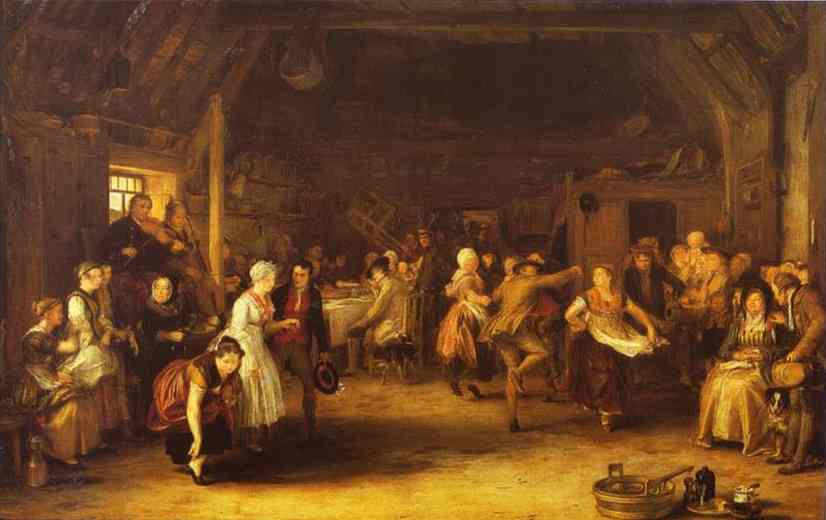
Meanwhile, Wilkie’s eminent success in art had been rewarded by professional honors. In November 1809, he was elected an associate of the Royal Academy, when he had hardly attained the age prescribed by its laws, and in February 1811 he became a full Academician. In 1812, he opened an exhibition of his collected works in Pall Mall, but the experiment was unsuccessful entailing pecuniary loss upon the artist.

In 1814, Wilkie executed the Letter of Introduction, one of the most delicately finished and perfect of his cabinet pictures. In the same year he made his first visit to the continent and in Paris, entered upon a profitable and delightful study of the works of art collected in the Louvre. Interesting particulars of the time are preserved in his own matter-of-fact diary and in the more sprightly and flowing pages of the journal of Haydon, his fellow traveler. Upon Wilkie’s return, he began Distraining for Rent, one of the most popular and dramatic of his works. In 1816, he made a tour through Holland and Belgium in company with Raimbach, the engraver of many of his paintings. Sir Walter Scott and his Family, a cabinet-sized picture with small full-length figures in the dress of Scottish peasants, was the result of a visit to Abbotsford in 1818. Reading a Will, a commission from the king of Bavaria, now at the New Pinakothek in Munich, was completed in 1820; and two years later, the great picture of Chelsea Pensioners Reading the Gazette of the Battle of Waterloo, commissioned by the Duke of Wellington in 1816 at a cost of 1200 guineas, was exhibited at the Royal Academy.
In 1822, Wilkie visited Edinburgh in order to select for Visit of King George IV to Scotland a fitting subject for a picture. The Reception of the King at the Entrance of Holyrood Palace was the incident ultimately chosen. In the following year, when the artist, upon the death of Raeburn, had been appointed Royal Limner for Scotland, he received sittings from the monarch and began to work diligently upon the subject. But several years elapsed before its completion. Like all such ceremonial works, it proved a harassing commission, uncongenial to the painter while in progress and unsatisfactory when finished. Wilkie’s health suffered from the strain to which he was subjected, and his condition was aggravated by heavy domestic trials and responsibilities.
In 1825, Wilkie sought relief in foreign travel. After visiting Paris, he went to Italy, and while he was in Rome, he received the news of fresh disasters through the failure of his publishers. A resident at Toplitz and Carlsbad was tried in 1826, with little good result, and then Wilkie returned to Italy. The summer of 1827 was spent in Geneva, where he had sufficiently recovered to paint his Princess Doria Washing the Pilgrims’ Feet, a work which, like several small pictures executed in Rome, was strongly influenced by the Italian art by which the painter had been surrounded. In October, Wilkie passed into Spain, whence he returned to England in June 1828.

It is impossible to overestimate the influence of Wilkie’s art of these three years of foreign travel. It amounts to nothing short of a complete change of style. Up to the period of his leaving England, he had been mainly influenced by the Dutch genre painters, whose technique he had carefully studied, and whose works he frequently kept beside him in his studio for reference as he painted, and whose method he applied to the rendering of those scenes of English and Scottish life of which he was so close and faithful an observer. Teniers, in particular, appears to have been his chief master, and in his earlier productions, we find the sharp, precise, spirited touch, rather subdued coloring, and clear, silvery grey tone which distinguished this master. While his subjects of a slightly later period, such as the Chelsea Pensioners, the Highland Whisky Still and the Rabbit on the Wall, were executed in what Burnet styles his second manner, they may be regarded as only the development and maturity of his first. Wilkie begins to unite the qualities of Teniers that greater richness and fullness of effect, which are characteristic of Ostade. But now he experienced the spell of the Italian masters and Diego Velazquez and the other great Spaniards.
In the works which Wilkie produced in his final period, he exchanged the detailed handling, the delicate finish and the reticent hues of his earlier works for a style distinguished by breadth of touch, largeness of effect, richness of tone and full force of melting and powerful color. His subjects, too, were no longer the homely things of the genre painter. With his broader method, he attempted the portrayal of scenes from history, suggested for the most part by the associations of his foreign travel. Wilkie’s change of style and change of subject were severely criticized at the time. To some extent he lost his hold upon the public, who missed the familiar subjects and interest and pathos of his earlier productions and were less ready to follow him into the historic scenes towards which this final phase of his art sought to lead them. The popular verdict had in it a basis of truth: Wilkie was indeed greatest as a genre painter. On technical grounds, his change of style was criticized with undue severity. While his later works are admittedly more frequently faulty in form and draughtsmanship than those of his earlier period, some of them at least show a true gain and development in power of handling and in mastery over complex and forcible color harmonies. Most of Wilkie’s foreign subjects passed into the English royal collection, but the dramatic Two Spanish Monks of Toledo, also entitled the Confessor Confessing, became the property of the marquis of Lansdowne. Upon his return to England, Wilkie completed Reception of the King at the Entrance of Holyrood Palace, which is a curious example of a union between his earlier and later styles. Preaching of John Knox Before the Lords of the Congregation was also begun before he left for abroad, but it was painted in the later style and consequently presents a more satisfactory unity and harmony of treatment and handling. It was one of the most successful pictures of the artist’s later period.

In the beginning of 1830, Wilkie succeed Sir T Lawrence as painter in ordinary to the king, and in 1836, he received the honor of knighthood. The main figure pictures, which occupied him until the end, were “Columbus in the Convent at La Rabida” (1835), “Napoleon and Pius VII at Fontainebleau” (1836), “Sir David Baird Discovering the Body of Tippoo Sahib” (1838), the “Empress Josephine and the Fortune-Teller” (1838), and “Queen Victoria Presiding at her First Council” (1838). His time was also much occupied with portraiture, and many of his works of this class being royal commissions. His portraits are pictorial and excellent in general distribution, but the faces are frequently wanting in drawing and character. He seldom succeeded in showing his sitters at their best, and his female portraits, in particular, rarely gave satisfaction. A favorable example of Wilkie’s cabinet-sized portraits is that of Sir Robert Listen; his likeness of W. Esdaile is an admirable three-quarter length; and one of his finest full-lengths is the gallery portrait of Lord Kellie in the town hall of Cupar.
In the autumn of 1840, Wilkie resolved on a voyage to the East. Passing through Holland and Germany, he reached Constantinople, where, while detained by the war in Syria, he painted a portrait of the young sultan. He then sailed for Smyrna and traveled to Jerusalem, where he remained for some five busy weeks. The last work of them all was a portrait of Mehemet Ali done at Alexandria. On his return voyage, he suffered from an attack of illness at Malta and died at sea off of Gibraltar on the morning of 1 June 1841. His body was consigned to the deep in the Bay of Gibraltar.
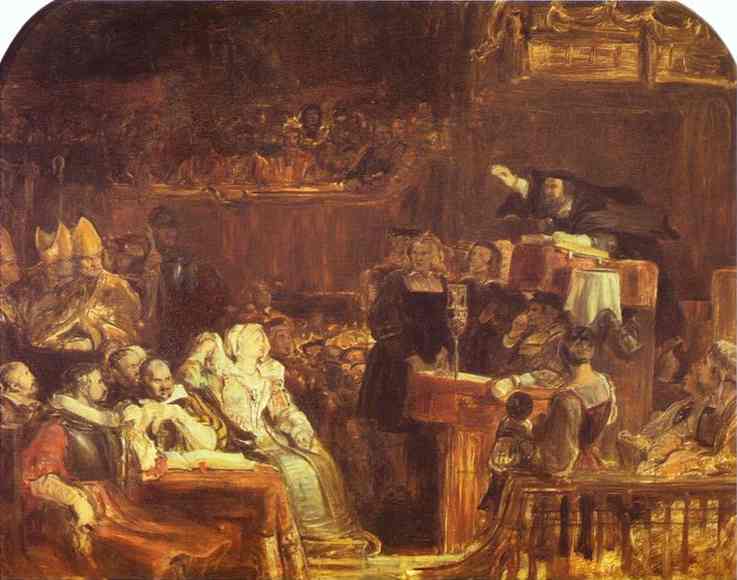
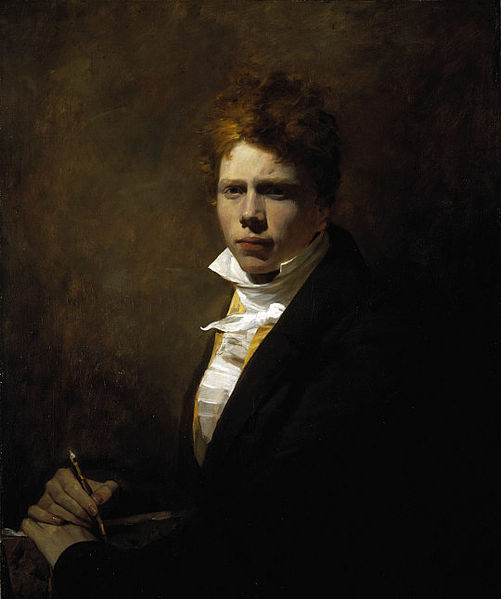
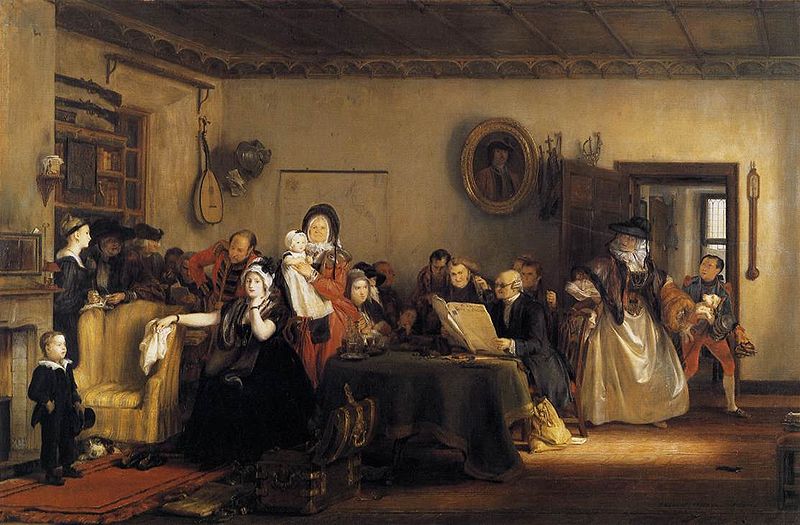
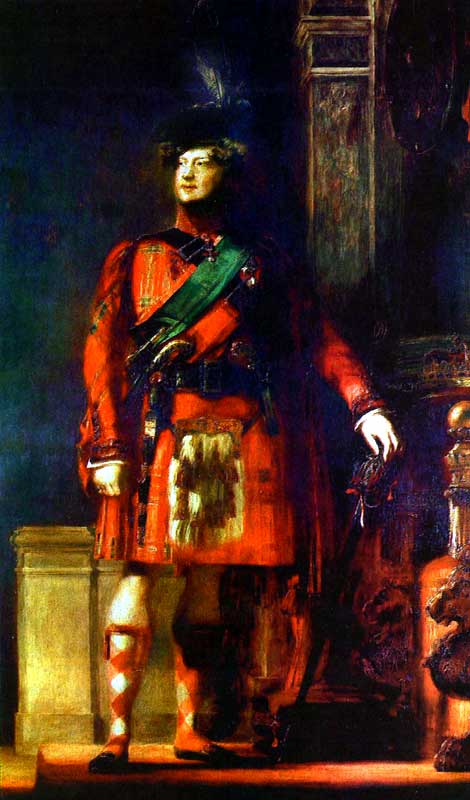

Still wondering about a Scottish painting in your family collection? Contact us…we are the Sir David Wilkie experts.
Reviews
1,217 global ratings
5 Star
4 Star
3 Star
2 Star
1 Star
Your evaluation is very important to us. Thank you.
